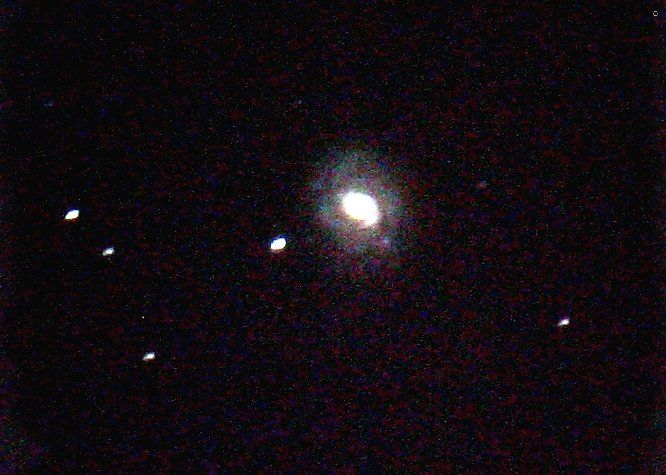M77
Messier 77 or M77, also known as NGC 1068, is a barred spiral galaxy about 47 million light-years away in the constellation Cetus. Messier 77 was discovered by Pierre Méchain in 1780, who originally described it as a nebula. Méchain then communicated his discovery to Charles Messier, who subsequently listed the object in his catalog. Both Messier and William Herschel described this galaxy as a star cluster. Today, however, the object is known to be a galaxy.
The morphological classification of NGC 1068 in the De Vaucouleurs system is (R)SA(rs)b, where the '(R)' indicates an outer ring-like structure, 'SA' denotes a non-barred spiral, '(rs)' means a transitional inner ring/spiral structure, and 'b' says the spiral arms are moderately wound.[8] Ann et al. (2015) gave it a class of SAa, suggesting a non-barred spiral galaxy with tightly wound arms. However, infrared images of the inner part of the galaxy reveal a prominent bar feature not seen in visual light, and for this reason it is now considered a barred spiral.
Messier 77 is an active galaxy with an Active Galactic Nucleus (AGN), which is obscured from view by astronomical dust at visible wavelengths. The diameter of the molecular disk and hot plasma associated with the obscuring material was first measured at radio wavelengths by the VLBA and VLA. The hot dust around the nucleus was subsequently measured in the mid-infrared by the MIDI instrument at the VLTI. It is the brightest and one of the closest and best-studied type 2 Seyfert galaxies, forming a prototype of this class.
X-ray source 1H 0244+001 in Cetus has been identified as Messier 77. Only one supernova has been detected in Messier 77. The supernova, named SN 2018 ivc, was discovered on 24 November 2018 by the DLT40 Survey. It is a type II supernova, and at discovery it was 15th magnitude and brightening.
